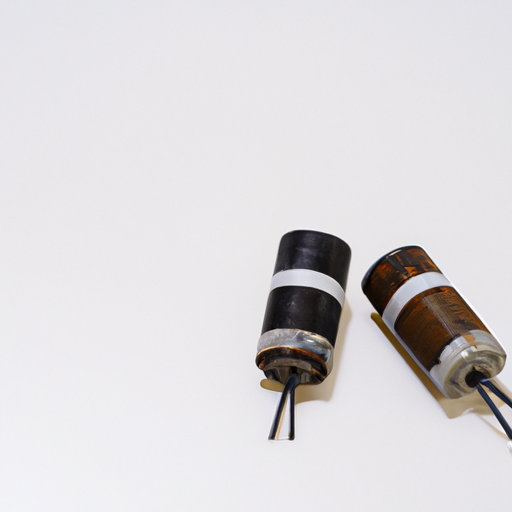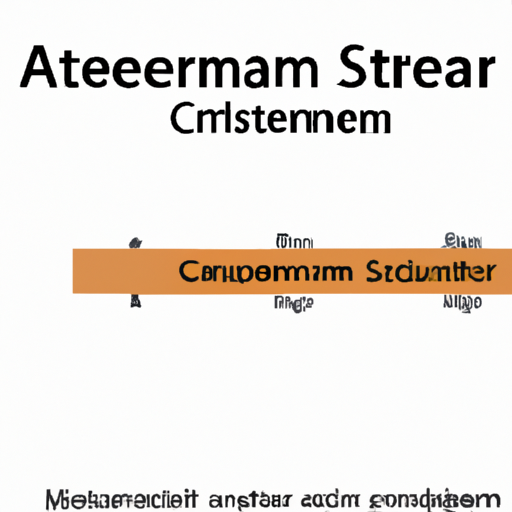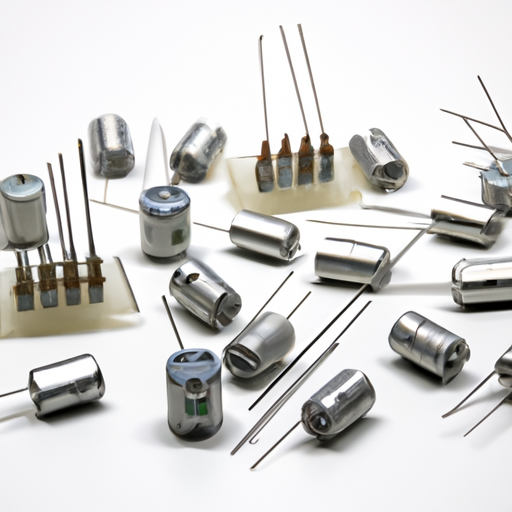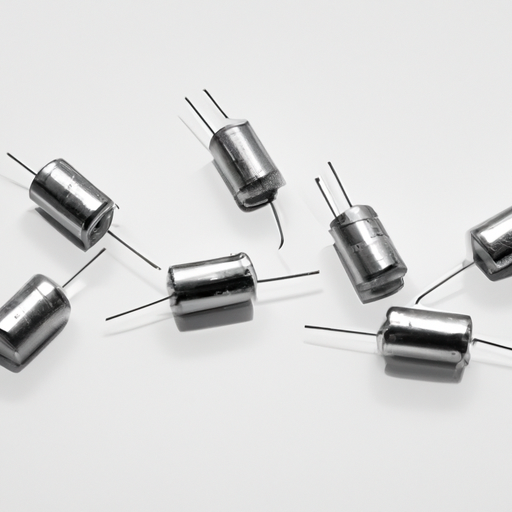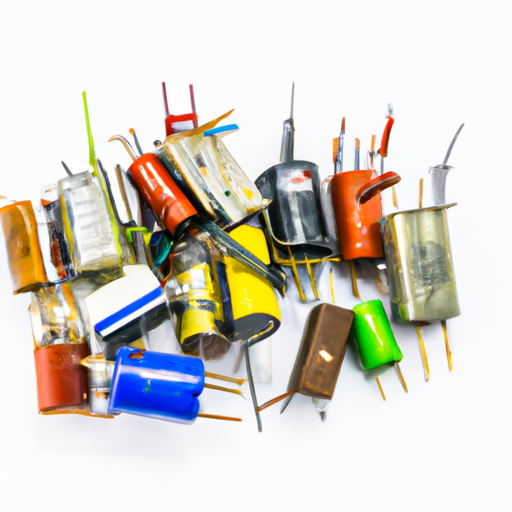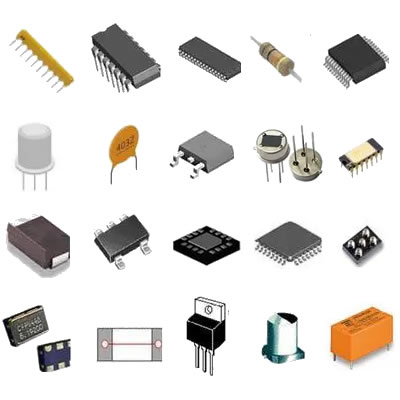What are the types of popular capacitor grounding products?
What are the Types of Popular Capacitor Grounding Products?
I. Introduction
In the realm of electrical systems, grounding is a critical aspect that ensures safety, reliability, and efficiency. One of the key components that often require grounding is capacitors. Capacitor grounding refers to the practice of connecting capacitors to the ground to prevent electrical faults and enhance system performance. This article delves into the various types of popular capacitor grounding products, their functions, and the importance of proper grounding in electrical systems.
II. Understanding Capacitors and Their Role in Electrical Systems
A. Basic Function of Capacitors
Capacitors are passive electrical components that store and release electrical energy. They play a vital role in various applications, including filtering, energy storage, and power factor correction. By storing energy in an electric field, capacitors can smooth out voltage fluctuations and provide stability to electrical systems.
B. Types of Capacitors
1. **Electrolytic Capacitors**: These capacitors are polarized and typically used in applications requiring high capacitance values, such as power supply circuits.
2. **Ceramic Capacitors**: Known for their stability and reliability, ceramic capacitors are widely used in high-frequency applications.
3. **Film Capacitors**: These capacitors are known for their low loss and high insulation resistance, making them suitable for audio and power applications.
4. **Tantalum Capacitors**: Tantalum capacitors offer high capacitance in a small package and are often used in portable electronic devices.
C. The Need for Grounding Capacitors
Grounding capacitors is essential to prevent electrical shock, reduce electromagnetic interference, and ensure the safe operation of electrical systems. Proper grounding helps to dissipate excess energy and provides a path for fault currents, thereby protecting both equipment and personnel.
III. The Concept of Grounding in Electrical Systems
A. Definition of Grounding
Grounding is the process of connecting electrical systems to the earth or a conductive body that serves as a reference point for voltage. This connection helps to stabilize voltage levels and provides a safe path for fault currents.
B. Types of Grounding
1. **System Grounding**: This involves connecting the neutral point of a power system to the ground, ensuring that the system operates safely under normal conditions.
2. **Equipment Grounding**: This type of grounding connects the non-current-carrying parts of electrical equipment to the ground, preventing electrical shock hazards.
3. **Functional Grounding**: This is used to ensure the proper operation of electrical equipment, such as providing a reference point for signal circuits.
C. Benefits of Proper Grounding
Proper grounding enhances the safety and reliability of electrical systems. It helps to prevent electrical shocks, reduces the risk of equipment damage, and minimizes electromagnetic interference. Additionally, effective grounding can improve the overall performance of electrical systems.
IV. Types of Popular Capacitor Grounding Products
A. Grounding Resistors
1. Purpose and Function
Grounding resistors are used to limit the fault current in electrical systems. They provide a controlled path for fault currents to flow to the ground, reducing the risk of equipment damage and ensuring personnel safety.
2. Types of Grounding Resistors
Neutral Grounding Resistors (NGR): These resistors are connected to the neutral point of a power system and help to limit the fault current during a ground fault.
Grounding Transformer Resistors: These resistors are used in conjunction with grounding transformers to provide a low-resistance path for fault currents.
B. Grounding Bars and Plates
1. Description and Use
Grounding bars and plates are conductive materials used to connect multiple grounding conductors to a common ground point. They provide a reliable and efficient means of grounding electrical systems.
2. Materials Used
Grounding bars and plates are typically made from copper or aluminum due to their excellent conductivity and resistance to corrosion.
C. Grounding Kits
1. Components of Grounding Kits
Grounding kits usually include various components such as grounding rods, clamps, connectors, and cables. These kits provide a comprehensive solution for grounding electrical systems.
2. Applications and Benefits
Grounding kits are versatile and can be used in various applications, including residential, commercial, and industrial settings. They simplify the grounding process and ensure compliance with safety standards.
D. Grounding Rods and Electrodes
1. Types of Grounding Rods
Grounding rods are typically made from copper or galvanized steel and are driven into the ground to establish a low-resistance path for fault currents. Common types include:
Copper Grounding Rods: Known for their excellent conductivity and resistance to corrosion.
Galvanized Steel Grounding Rods: More economical but may require additional maintenance due to corrosion.
2. Installation and Maintenance
Proper installation of grounding rods involves driving them into the ground to a sufficient depth and ensuring a good electrical connection. Regular maintenance includes inspecting for corrosion and ensuring that connections remain secure.
E. Surge Protection Devices (SPDs)
1. Role of SPDs in Grounding
Surge protection devices are designed to protect electrical systems from voltage spikes caused by lightning strikes or other transient events. They work by diverting excess voltage to the ground, preventing damage to sensitive equipment.
2. Types of SPDs
Type 1 SPDs: Installed at the service entrance of a building to protect against external surges.
Type 2 SPDs: Installed at the distribution panel to protect against internal surges.
Type 3 SPDs: Installed at the point of use to protect individual devices.
F. Capacitor Banks with Integrated Grounding Solutions
1. Overview of Capacitor Banks
Capacitor banks are assemblies of multiple capacitors used to improve power factor and voltage stability in electrical systems. They can be found in various applications, including industrial and commercial settings.
2. Grounding Features in Capacitor Banks
Many modern capacitor banks come with integrated grounding solutions, ensuring that the entire system is properly grounded. This feature enhances safety and simplifies installation.
V. Factors to Consider When Choosing Capacitor Grounding Products
A. Application Requirements
When selecting grounding products, it is essential to consider the specific requirements of the application, including voltage levels, current ratings, and environmental conditions.
B. Environmental Conditions
Environmental factors such as humidity, temperature, and exposure to corrosive elements can impact the performance and longevity of grounding products. Choosing materials that can withstand these conditions is crucial.
C. Compliance with Standards and Regulations
Grounding products must comply with relevant safety standards and regulations to ensure safe operation. Familiarity with local codes and industry standards is essential when selecting grounding solutions.
D. Cost Considerations
While cost is an important factor, it should not be the sole consideration. Investing in high-quality grounding products can prevent costly equipment damage and ensure long-term reliability.
VI. Installation and Maintenance of Capacitor Grounding Products
A. Best Practices for Installation
Proper installation of grounding products is critical for their effectiveness. Following manufacturer guidelines and industry best practices can help ensure a safe and reliable grounding system.
B. Regular Maintenance and Inspection
Regular maintenance and inspection of grounding systems are essential to identify potential issues before they become serious problems. This includes checking connections, inspecting for corrosion, and testing the effectiveness of grounding systems.
C. Troubleshooting Common Issues
Common issues with grounding systems may include loose connections, corrosion, and inadequate grounding resistance. Identifying and addressing these issues promptly can help maintain system integrity.
VII. Conclusion
In conclusion, capacitor grounding is a vital aspect of electrical systems that enhances safety and performance. Understanding the various types of popular capacitor grounding products, such as grounding resistors, grounding bars, grounding kits, grounding rods, surge protection devices, and capacitor banks with integrated grounding solutions, is essential for selecting the right products for specific applications. By considering factors such as application requirements, environmental conditions, compliance with standards, and cost, one can make informed decisions that ensure the reliability and safety of electrical systems.
VIII. References
A comprehensive list of sources and further reading can provide additional insights into capacitor grounding products and their applications.

